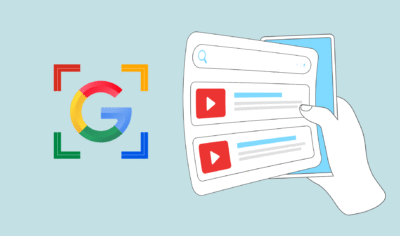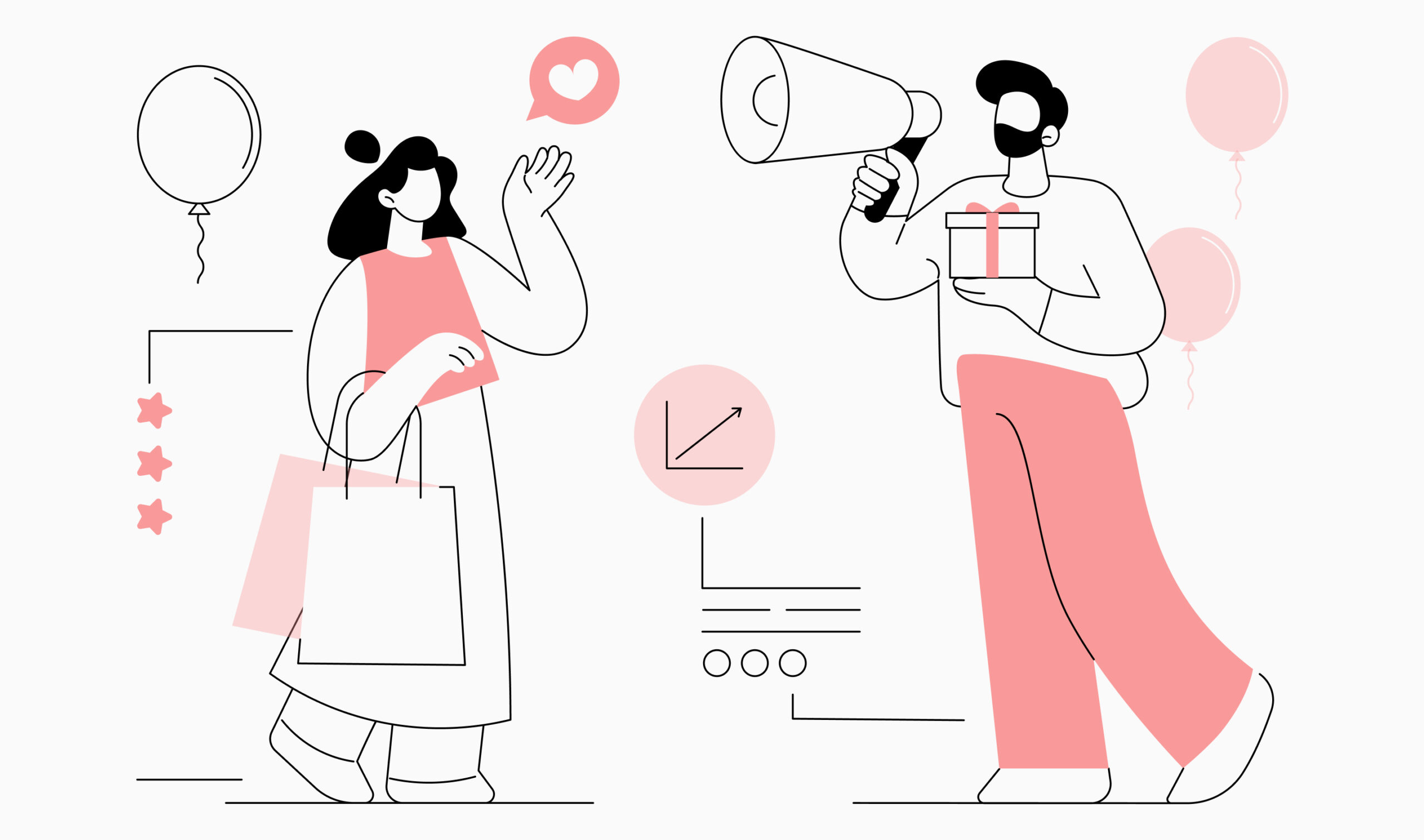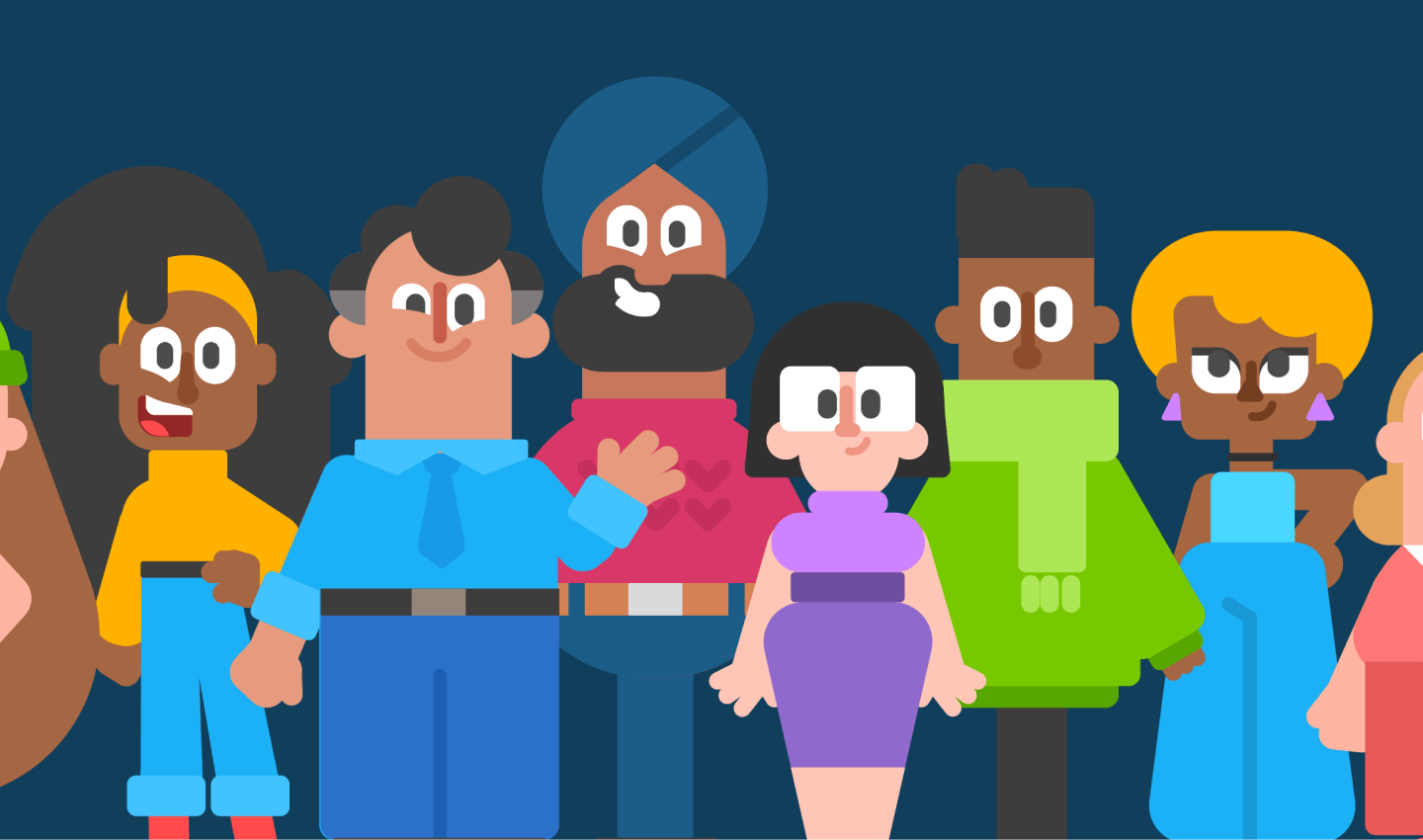
Reducing Churn with Good Customer Cancellation
Onboarding customers is of course important, but let’s not forget about the crucial concept of offboarding.
Katryna Balboni, Senior Content Marketing Manager at Appcues stated in an article, “When Ben Franklin claimed that nothing is certain except for death and taxes, he apparently forgot about customer churn.“
People find other products and people lose interest. It is important to make sure that your product is well designed so that customers stay interested and don’t search elsewhere. But sometimes you just can’t change their mind. You are always going to have to deal with customer churn.
I’m sure you’ve received at least one bland and abrupt email with very few words. The short and rude “your subscription has been cancelled.” After your relationship with this product you can think, “Oh, is that it?”
Companies that use abrupt and emotionless messaging are completely missing the mark when it comes to good customer cancellation. Yes, churn isn’t a positive thing. Goodbyes are hard. When a customer goes elsewhere, we’re definitely not skipping through a field of daisies. Yet, it is these moments that provide an opportunity for learning and improvement. It allows a company to strategise to reduce unsatisfied users who unsubscribe later down the track.
Below we delve into some ways to say goodbye to your customers, and give them a reason to return.
Table of Contents
Make it easy
You could be thinking how this might be counter-productive, as we’re trying to keep our users, not help them out the door. You might even consider making it difficult for them to leave by burying your cancellation flow in the darkest depths. But trust us, providing a difficult or emotionless unsubscribing flow will only leave a sour taste in a user’s mouth.
It is often thought that once that ‘cancel subscription’ / ‘unsubscribe’ button is pressed, it is the end of that relationship. The reality is that the customer relationship often continues after cancellation.
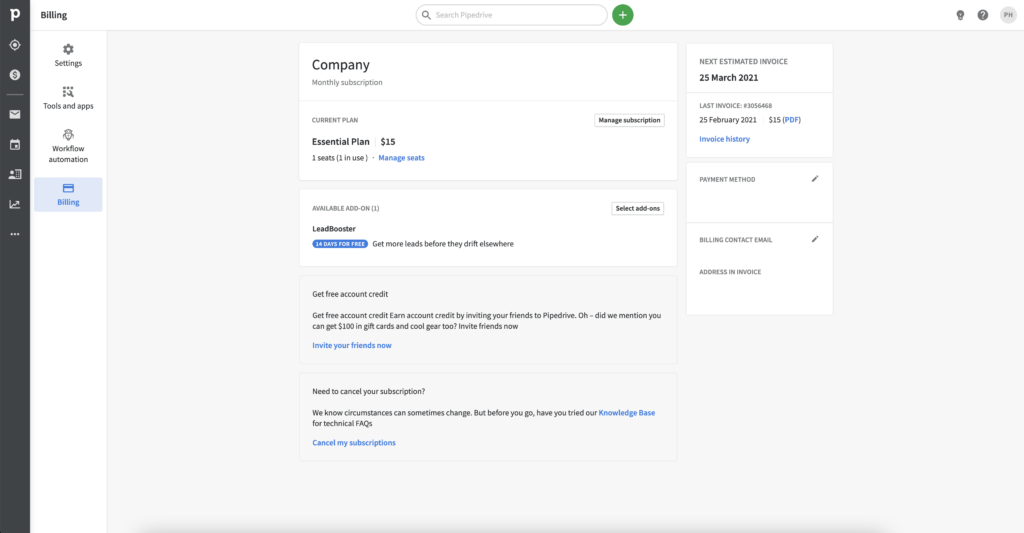
Companies usually make their ‘unsubscribe’ buttons quite discreet. You’ll notice it in plenty of marketing emails sitting unread in your inbox. It’s usually a tiny little piece of grey text at the bottom of the page. Some companies even make an effort to hide it, which taps into the poor ethics behind dark UX. Above you will see that Pipedrive has their “cancel my subscription” hidden. By hidden I mean displayed in smaller text at the bottom of the page. It is strategically placed so that it is not a priority, as we look at the top section with the white background more. However, it is still there and easily accessible to the user. It’s not hidden behind multiple windows and forms.
Customers who have cancelled may still renew their subscriptions at a later date, especially if they left on good terms with the company. So, it is super important to keep that relationship intact for future business.
Ask them “Why?”
According to a research piece by thinkJar, 25 out of 26 customers churn silently without complaining. Most users aren’t going to tell you why they cancelled unless you ask them, which is why it is so important to ask for feedback.
Pipedrive asks their unsubscribing users to share their reasons for leaving, and whilst the list is extensive, it allows the company to see why they are losing their customers. This in turn allows for a solid foundation when it comes to strategising an approach to customer retention.
They also ask in their last step of the unsubscription process what CRM platform they plan to go to now, how likely they are to return to Pipedrive, and if they have any final words before clicking the “Cancel my plan” CTA.
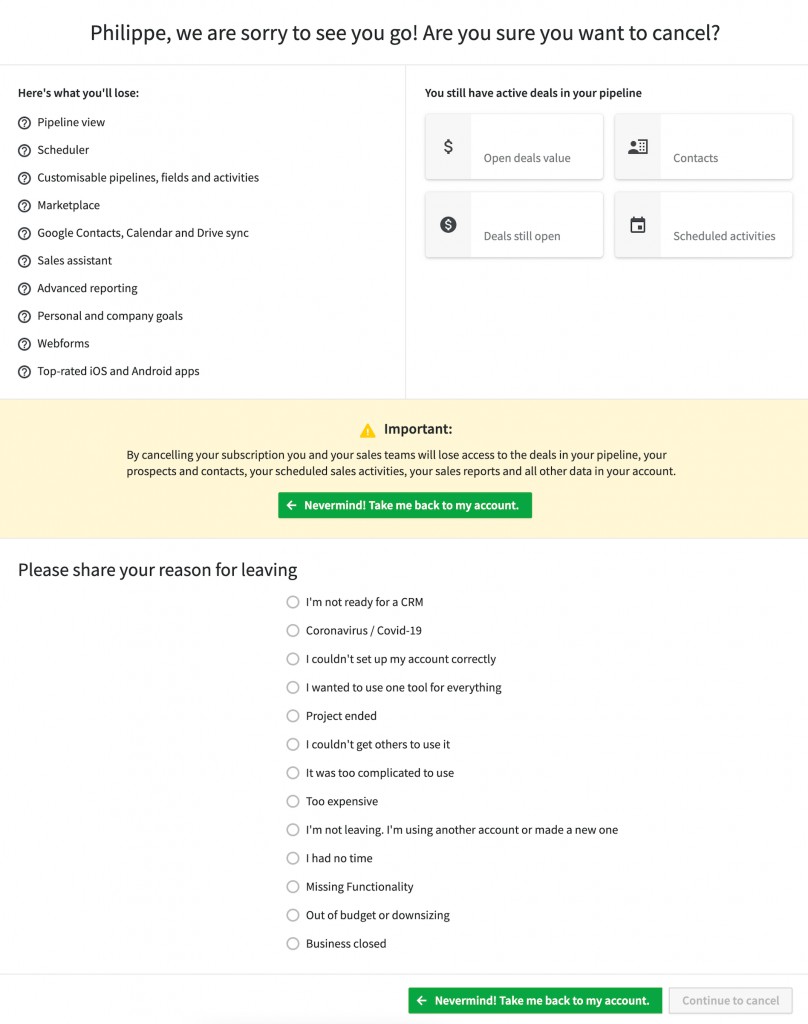
They also ask in their last step of the unsubscription process what CRM platform they plan to go to now, how likely they are to return to Pipedrive, and if they have any final words before clicking the “Cancel my plan” CTA.
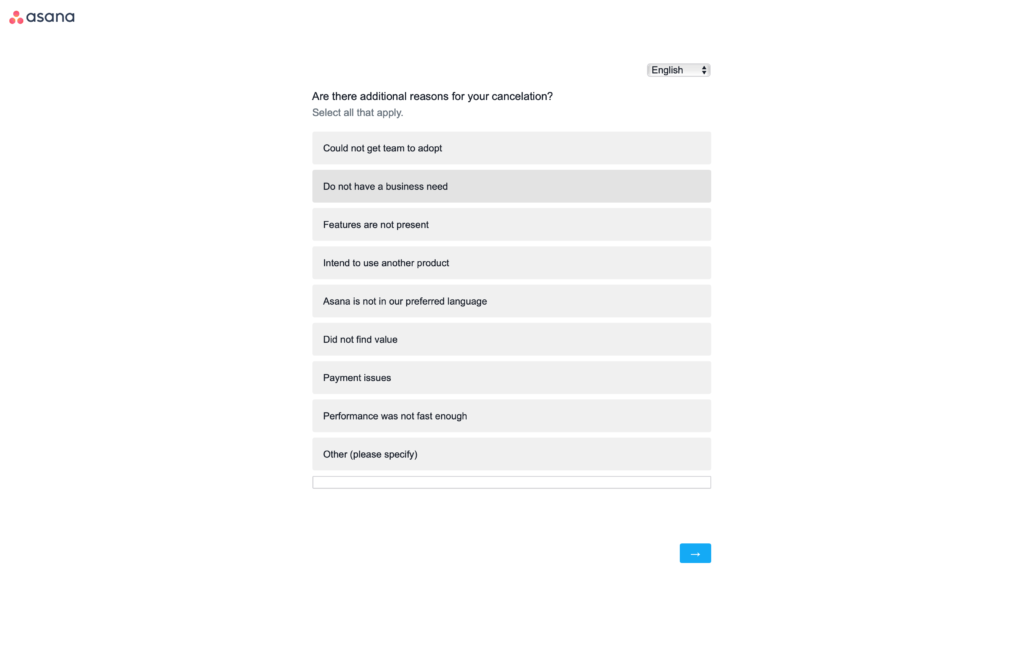
Asana also asks for their user’s reason for cancellation, with an ability to select “Other” if they find the options non-applicable to their situation. The examples provided have quite a few options for the user to select, which is good because the more direct and specific the information is that you gather, the more you learn how to improve your services. You are never going to find out a reason without asking “Why?” It can be a daunting task, it can invalidate months and years of work on a particular feature that customers just aren’t a fan of, and it can mean extra work. But if constant iteration and improvement don’t occur from customer feedback, you’ll find yourselves with an inconsequential product.
Show your support
Sometimes, users don’t figure out or explore a product entirely and decide to leave, sometimes the subscription is too expensive and the value is outweighed by the cost.
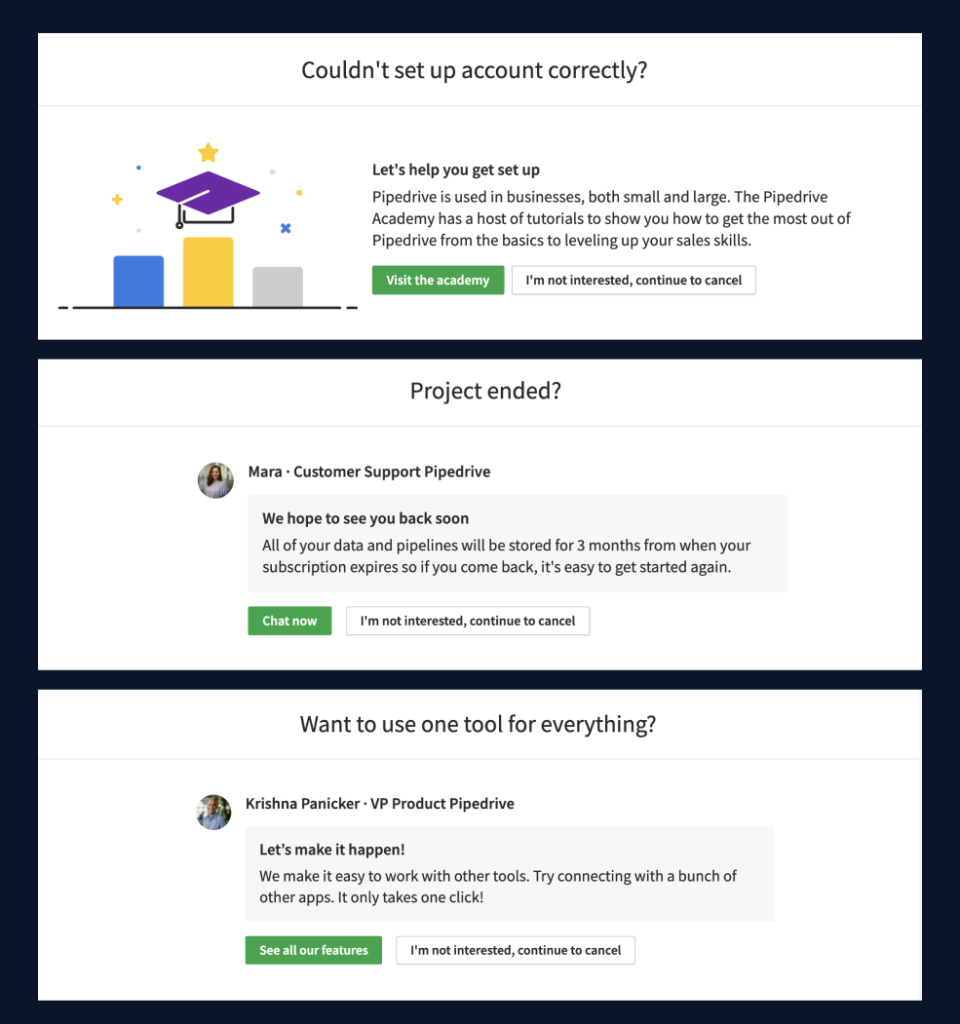
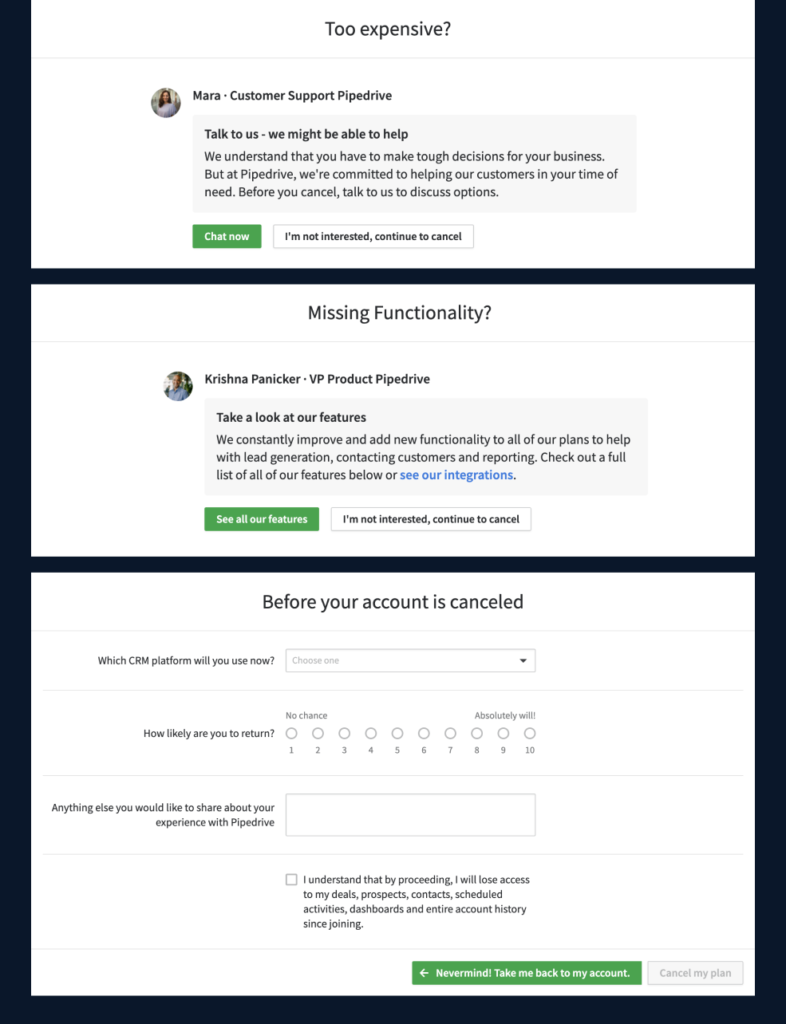
Pipedrive includes a few steps within their customer cancellation process, including information on the following situations:
- If the user couldn’t set up their account correctly, they offer their “Pipedrive Academy” service, which provides tutorials to help a user get set up.
- If the plan is too expensive, they encourage the user to speak to the team to discuss alternate payment options and write in an understanding tone.
- If the user finds some functionality is missing, the user is prompted to take a look at a list of their features and their integrations, emphasising the value of the product.
- If the user’s project has ended, Pipedrive state “We hope to see you back soon,” as they understand that if a project has ended, a company probably don’t want to be spending money on something they don’t need. They also state how the user’s data will be stored for 3 months after the subscription expires, so that if they come back it’ll be easy to onboard. This message has a friendly tone and works to keep that user-company relationship intact.
- If the user wants a one-stop-shop and doesn’t think Pipedrive meets the mark, Pipedrive counteracts this with some text mentioning how the product can easily work with other tools, encouraging the user to see these features.
Each screen still allows the user to click “I’m not interested, continue to cancel” which is strategically designed as an outlined secondary button. The messages on each screen are written by members of the Pipedrive team with their names, positions, and profile image included at the top. This may seem small, but it adds a lovely, personal element to the cancellation process and takes on board the “show your support” approach.
Remind them of the benefits
As users ourselves we can often forget the full scope of benefits that some subscriptions bring us, whether in our personal life or business. It could be blissful ad-free music streaming on Spotify, unlimited projects on a work program such as Miro, or free prioritised delivery when splurging on Amazon.
A great way to emphasise the product’s benefits (and give them a friendly little nudge in the I-don’t-want-to-unsubscribe-anymore direction) is to remind the user why they signed up in the first place, showcasing your product’s features.
One example of this method is Asana’s unsubscription flow. A page will pop up when you are unsubscribing that states “Don’t lose your premium features,” which includes 9 fantastically convenient (and essential) features for a user to make the most out of Asana.
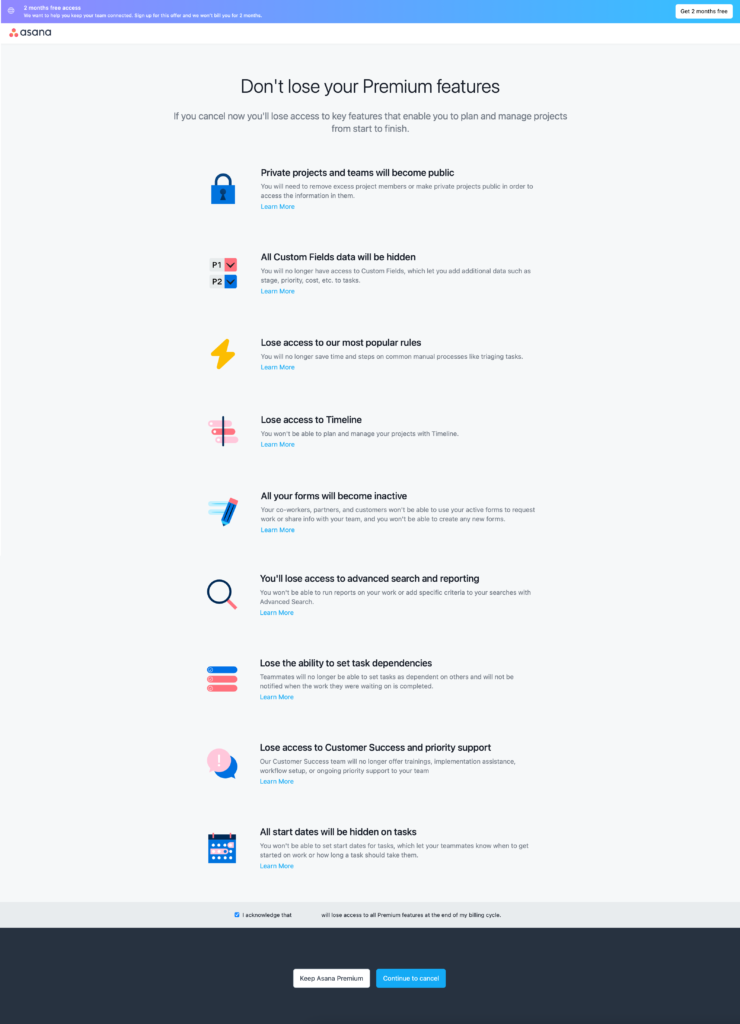
Your users came to your platform for a particular reason, so it is a great retention strategy to remind them gently (and visually) of all the fantastic things they are going to miss out on.
It’s much cheaper to retain an existing customer than to gain a new one effective offboarding allows users to change their mind. It doesn’t have to be pushy in any way, it’s just a page version of the question “Are you sure?”
This does go a little bit against the “Good customer cancellation” part of this article, as you’re almost trying to win them back. However, it is important to help your users see your product as an asset, not just an expense.
Make it easy to reactivate
As mentioned at the beginning of the article, users can always change their mind and come back at a later date. But what’s the use in doing so if your reactivation process is difficult to locate?
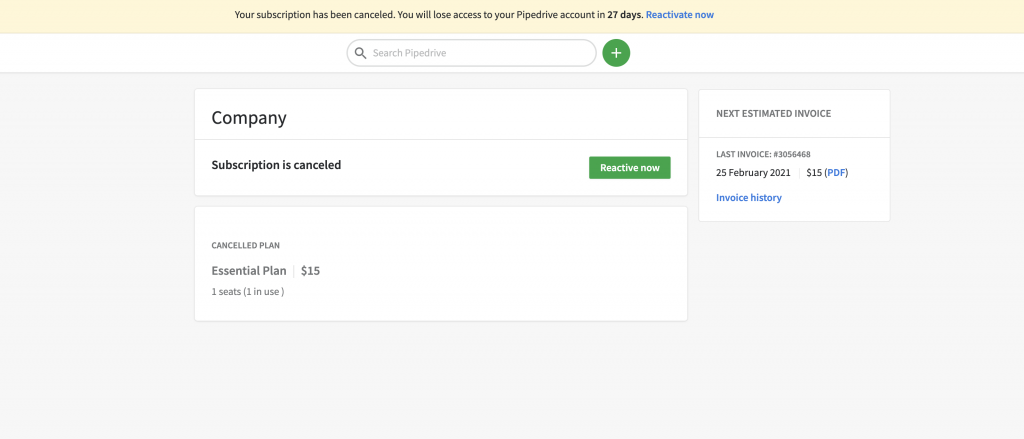
In the example above, Pipedrive has a screen that displays the essentials:
- Informing the user that the plan has been cancelled
- A “reactivate now” CTA
- Details + pricing of your cancelled plan
- A notification to remind the user that the account will be held for x number of days if they change their mind
Ensuring that your reactivation process is as supportive, painless and uncomplicated as possible will only benefit the product.
Wrap up
With competition continually rising across multiple industries, it is essential to now start treating customer cancellation as a pivotal flow in your product’s user experience.
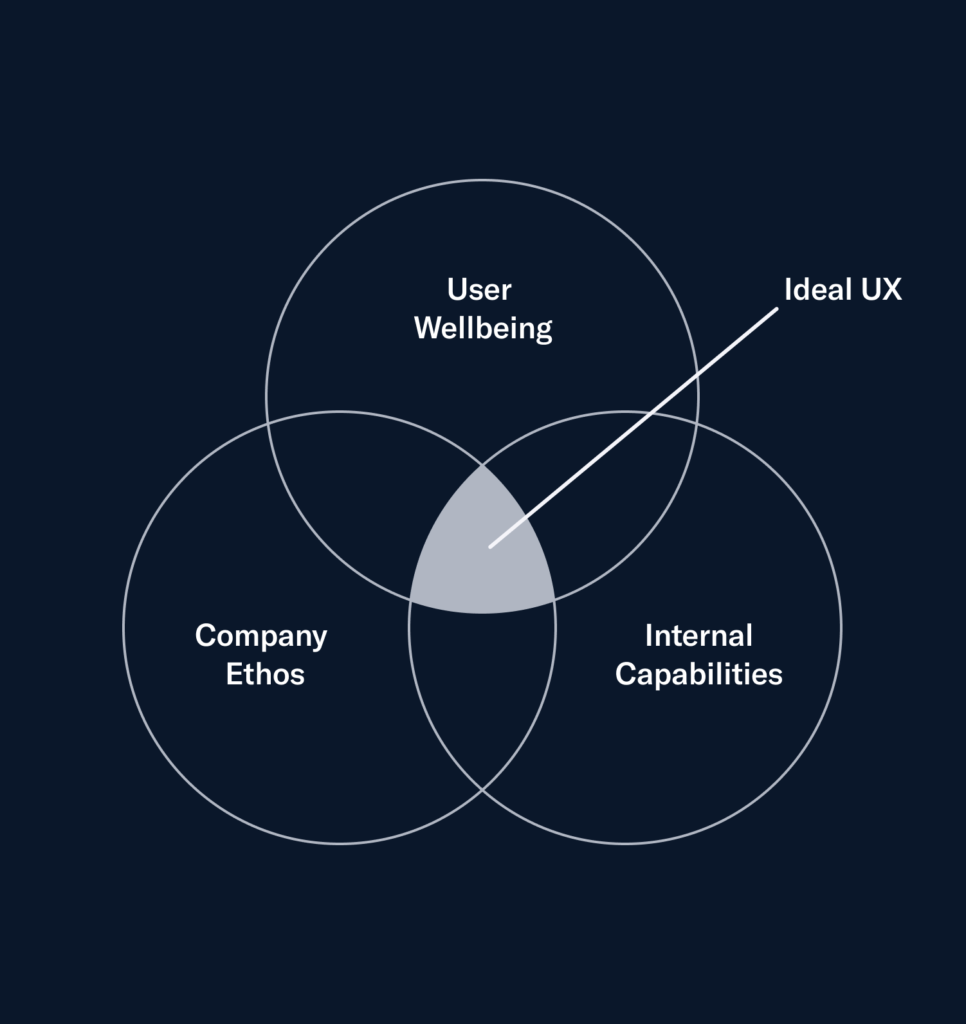
As with all things in UX, it’s tricky to know for sure whether one company’s cancellation flow will work for you. Creating an optimal experience for your users is always at the intersection of your company ethos, your internal capabilities (both financial and resources), and your users’ well-being.
Joe Macleod, founder of andEnd puts it nicely in this statement, “Closure experiences need to be designed well. Not left in limbo. As the evidence suggests from these examples of psychological research, the way we experience endings is important. First impressions last temporarily. Closure experiences are permanent, so let’s start designing them.”
Take your company to the next level and get results with our world class user experience, interface design and implementation.
Get a FREE 30 min Strategy Session

Related posts
Design Psychology: 4 Principles that Empower Designers – Part 3
This is part 3 of our 4-part series on basic design psychology, tackling design using senses (Sight and Touch). Check […]
Case study: How Duolingo Utilises Gamification to Increase User Interest
“We created Duolingo in 2011 with a mission to develop the best education in the world and make it universally […]
User Surveys: 6 Tips for Gaining Valuable Insights
Survey design is complicated, but when utilised correctly, surveys are an incredibly valuable and reliable tool in your research toolbox. […]
Creative product design that gets results
Take your company to the next level with world class user experience and interface design.
get a free strategy session
